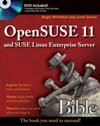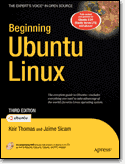作者:Roderick W. Smith
出版日期:2003
出版社:Sybex
页数:644
ISBN:0782142265
文件格式:CHM
Introduction
The last decade has seen quiet and not-so-quiet technologicalrevolutions. One of these many revolutions has been the emergence ofLinux as a rival operating system (OS) to the likes of Windows, Mac OS,and Unix. Linux is a clone of the Unix OS, and so it has benefited fromUnix’s 30-year history. Just as important as its place in the Unixfamily is the fact that Linux is an open source operating system,meaning that its source code is freely accessible to all. Anybody canmodify Linux and distribute these modifications. This fact has drawn ageographically diverse and enthusiastic group of developers into theLinux fold. The result has been tremendous technical advancements inLinux. These advancements have permitted the OS to develop into acompetitor to both older Unix-like OSs and the popular Windows and MacOS desktop OSs.
You may be reading these words while standing in a bookstore. If so,you can glance down and see plenty of other books on Linux. Most ofthese books are either general introductory books or books on veryspecific Linux programs. This book is designed to fit somewhere betweenthese two general categories. Linux Power Tools is a general-purposeLinux book, but its goal is to go into greater depth than a typicalintroductory book on the OS. For this reason, Linux Power Tools omitscoverage of some basic information. For instance, the book lacks achapter on installing Linux—a popular topic in most introductory books.Instead, this book emphasizes more advanced options and tools, such asconfiguring fonts using Xft, modifying the system’s startup scripts,setting up a network-based scanning system, and setting your system’stime with the help of a time server.
One of the problems in the Linux world is that many Linuxdistributions exist. These distributions are collections of software(including installation routines) that together make a complete OS.Unfortunately, although all Linux distributions are Linux, no twodistributions are exactly alike. This fact can be frustrating whenyou’re trying to learn how something works, because what you read maybe targeted at another distribution. This book aims to overcome thisproblem by providing explicit coverage of five of the most popularLinux distributions: Debian, Mandrake, Red Hat, Slackware, and SuSE.When I describe major configuration files or components, I describedistribution-specific differences. In some cases, this means that Idescribe two or more entirely different programs that fill similarroles. For instance, this book covers three mail servers: Exim,Postfix, and sendmail.





 评论 (0)
评论 (0) 